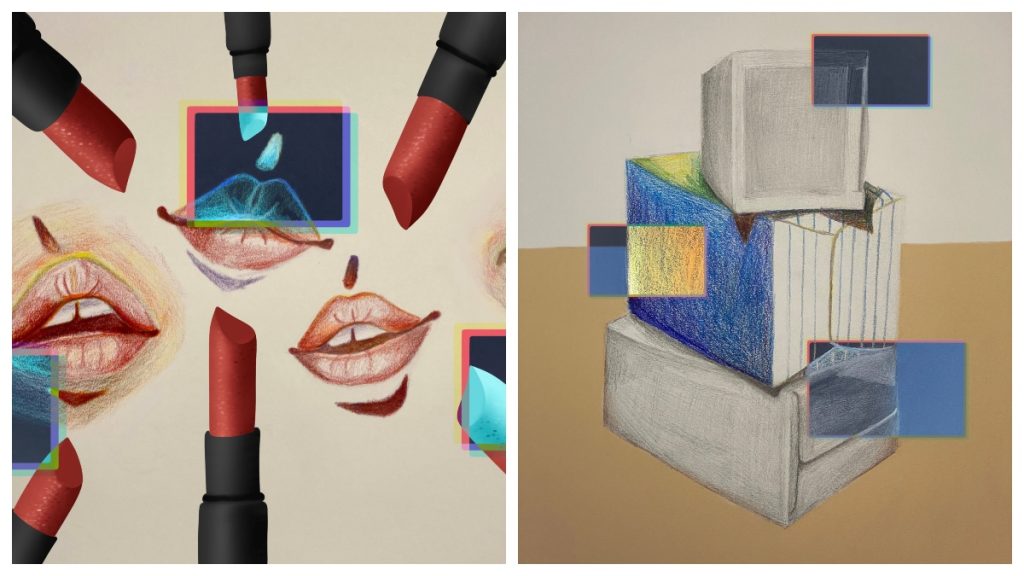For many facilitators, as well as learners, creating a high quality, online learning experience is a challenge. Additionally, what if you added the rigors of AP and the traditional hands-on aspects of Art? This might seem like almost an impossibility to some. But not if you’re iLEAD Online Facilitator Jennifer Turnbull.
Visual Arts Facilitator Turnbull teaches a variety of courses, as well as supports CTE Pathway work as well. The arts pathways lead to the capstone courses AP Drawing and AP 2-D. In these two capstone courses, according to Turnbull, learners work towards a goal of creating a professional portfolio that is worthy of submitting to the College Board. More info about these classes can be found here and Turnbull said these courses are very challenging, but also rewarding.
“I think the best part is knowing that the learners have the potential to earn high school credits and college credits for one course,” she said. “AP classes look great on college applications and the portfolios that my learners create could be used to showcase a learner’s body of work if they apply for entrance at an art school.”
Teaching Art, especially AP Art, presents many unique challenges and opportunities, according to Turnbull. She said all of her arts courses are project-based including these AP Art courses. She said the College Board offers AP Drawing portfolio exams and also AP 2-D Art and Design portfolio exams.
She said the Drawing portfolio has more of a focus on mark-making. Turnbull said that drawings, paintings and even digital drawings are accepted in this category.
“I provide suggestions for mediums and materials, but I allow my learners to decide what drawing mediums with which they want to experiment,” said Turnbull.
However, the 2-D portfolio is more focused on design, according to Turnbull where photographs and digital drawings are accepted. She said that since it is generally easier for learners to create the body of work necessary for an AP class, she generally recommends that learners select photography as their preferred medium.
“However, I have had some amazing learners create digital artworks for this portfolio and earn successful scores on the AP 2-D portfolio exam,” she added.
These courses focused on portfolios and challenging projects have produced some very unique products, according to Turnbull. For example, some learners work on large animation projects and get to experiment with various online programs and methods for sophisticated animation work.
“I am really proud of how well their animations turned out. We have a lot of talented learners at our school,” said Turnbull.
The learners’ aspirations vary, according to Turnbull. She said her AP Art learners have done everything from pursue Art in college, as well as pursue careers as diverse as medicine and teaching. Recently, Turnbull discovered that one of her AP Art learners will be attending the prestigious program at the Otis College Of Art & Design.
“I have actually had a few who have told me that I inspired them to become a teacher,” she said. “I always get excited when my learners tell me they are going to an art school or majoring in art.”
One of the many things Turnbull enjoys is showcasing her learners’ artwork. In addition to other online venues and social media, she maintains an iLEAD Online Gallery to feature learners and former learners’ work. She said the online gallery is a natural fit for an online school.
“I think it gives the learners a little chance to experience what it feels like to get published,” said Turnbull. “I have gotten positive feedback from learners, parents and staff over it. I plan for it to grow really big in years to come.”
Turnbull believes that all art courses, including the advanced AP art courses, are vital for all learners in terms of nurturing their creativity and different thinking skills. She said that her art learners tend to use these skills in all of the post-secondary studies and careers.
“To produce quality artworks, one must be a good problem-solver, be patient and be dedicated,” she said. “These qualities could be applied to many careers including engineering, teaching, computer science, finance, etc.”
Additionally, Turnbull believes that creating art can also help one develop a deeper understanding of and appreciation for art.
“I believe that art is a language we can all understand,” she said. “Creating art can connect people with other places, cultures and periods of time.”
Turnbull plans to continue to grow all of the arts courses and pathways. She is excited about what her learners have accomplished and what lies ahead.
“Like my learners, I am always trying to create and do new things,” she said. “That’s what keeps us learning lifelong.”

